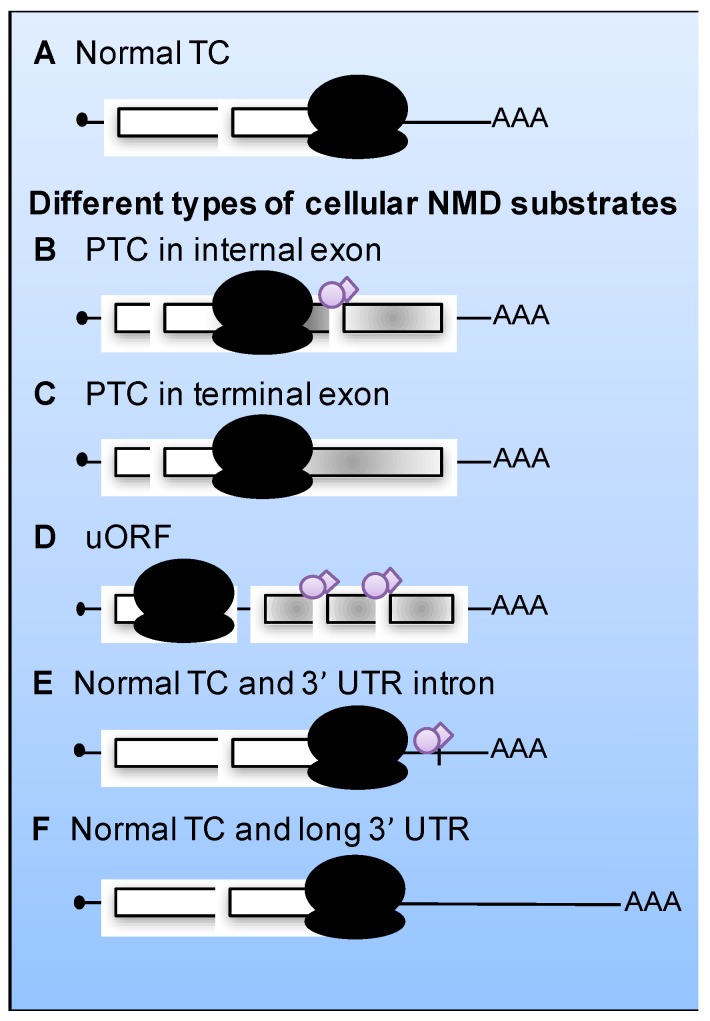Figure 1.
Different types of cellular mRNAs that can be substrates for nonsense-mediated mRNA decay (NMD). (A) An mRNA with a normal termination codon (TC) positioned in a context that does not trigger NMD: the termination codon is at the end of the last exon followed by a short 3’‑untranslated region (3’-UTR). (B–F) NMD targets comprise mRNAs with a truncated ORF due to a premature termination codon (PTC) in an internal (B) or terminal (C) exon. The presence of protein complexes known as exon junction complexes (EJCs) downstream the TC increases, but it is not necessary for, NMD (see Section 3). Upstream ORF (uORF), (D), the presence of EJC-associated introns in the 3’-UTR (E), and long 3’-UTR (F), all act as RNA destabilizing factors and trigger NMD. White boxes denote translated ORFs; gray boxes denote the fraction of the ORF that is not translated due to the presence of a PTC. Ribosomes are indicated in black, EJC in purple.

